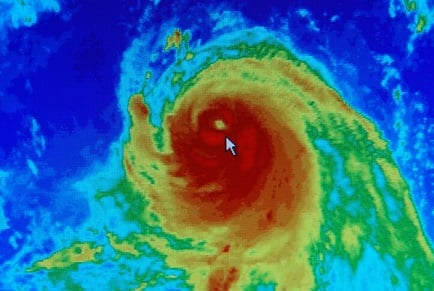

As summer approaches along the Gulf and Atlantic coasts, residents prepare for the hurricane season ahead. The Atlantic hurricane season – June through November (though known to start as early as January in past years) – has devastated communities from Texas to New England, resulting in significant recovery costs. However, coastal weather events are not singular forces: they are made up of various elements, from wind and storm surge to rainfall and debris. In fact, it is the force of storm surge that inundates communities, often causing some of the most severe damage.
Wall of Water: Storm Surge Defined
Storm surge is a complex phenomenon that occurs when sea water is pushed toward the shore by powerful winds associated with cyclonic storms. As it moves across the ocean, strong winds inside the hurricane act like a plow, causing water to pile up along the front of the storm. Hurricane speeds can be highly variable, and while fast-moving storms tend to generate higher surge levels (e.g. Hurricanes Irma and Maria), slower storms force a larger volume of water and subsequent flooding (e.g. Hurricane Harvey). Therefore, regardless of the speed of the hurricane, the damage inflicted by storm surge in prone areas is often considerable.
Considering that billions of cubic yards of storm surge can move onshore – with each cubic yard of sea water weighing nearly one ton – the hydraulic impact of storm surge waves tends to be incredibly destructive.
The Contradiction of Storm Surge Risk Levels
Storm surge is ranked by risk level, from Extreme to Low, based on hurricane categories. Category 5 storms (the most extreme weather events) are the lowest risk level because they are the least likely to occur. However, they will cause more storm surge flooding inland than higher-risk, lower category storms. Powerful hurricanes thrive in regions with warmer water and air, so the southern Atlantic and Gulf Coast seas tend to breed more powerful winds and amass storms that ultimately lead to major hurricanes including Category 3, 4 and 5 hurricanes.
Where is Storm Surge Most Likely to Occur?
Since storm surge pushes large volumes of water toward the shore, geographic areas closer to the coast and located on lower elevations are at extreme risk of storm surge-related flooding from any size hurricane. Despite the risk, these areas tend to be very developed, with a dense distribution of homes, businesses and tourist attractions, and include urban centers such as Miami, New York City or New Orleans (each of which ranks in the top four metropolitan areas for storm surge risk).
Using the Past to Prepare for Hurricane Season
For communities along the Gulf and Atlantic coasts, the damage and destruction from these storms is unavoidable. However, by understanding the factors that contribute to hurricanes and identifying the most exposed areas, residents can exercise preparedness to mitigate risk and lessen destruction.
